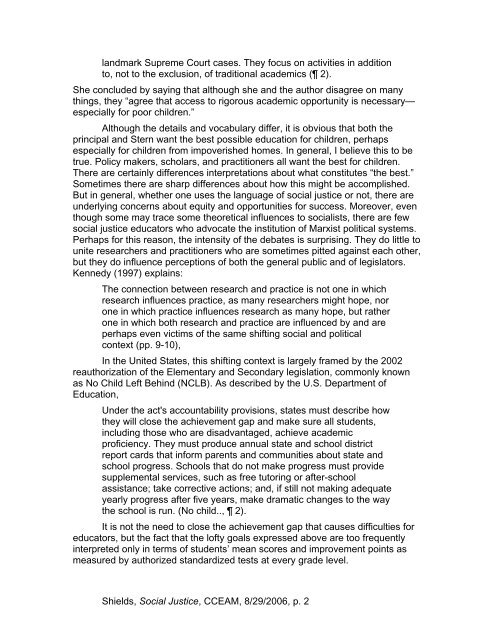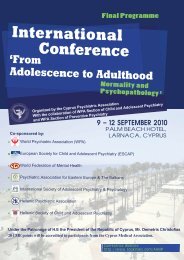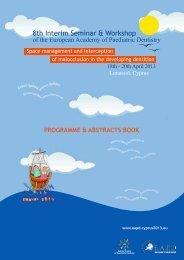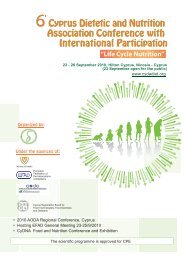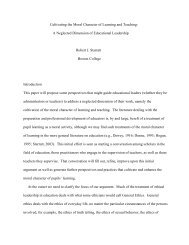SHIELDS M. Carolyn3.pdf
SHIELDS M. Carolyn3.pdf
SHIELDS M. Carolyn3.pdf
You also want an ePaper? Increase the reach of your titles
YUMPU automatically turns print PDFs into web optimized ePapers that Google loves.
landmark Supreme Court cases. They focus on activities in addition<br />
to, not to the exclusion, of traditional academics ( 2).<br />
She concluded by saying that although she and the author disagree on many<br />
things, they “agree that access to rigorous academic opportunity is necessary—<br />
especially for poor children.”<br />
Although the details and vocabulary differ, it is obvious that both the<br />
principal and Stern want the best possible education for children, perhaps<br />
especially for children from impoverished homes. In general, I believe this to be<br />
true. Policy makers, scholars, and practitioners all want the best for children.<br />
There are certainly differences interpretations about what constitutes “the best.”<br />
Sometimes there are sharp differences about how this might be accomplished.<br />
But in general, whether one uses the language of social justice or not, there are<br />
underlying concerns about equity and opportunities for success. Moreover, even<br />
though some may trace some theoretical influences to socialists, there are few<br />
social justice educators who advocate the institution of Marxist political systems.<br />
Perhaps for this reason, the intensity of the debates is surprising. They do little to<br />
unite researchers and practitioners who are sometimes pitted against each other,<br />
but they do influence perceptions of both the general public and of legislators.<br />
Kennedy (1997) explains:<br />
The connection between research and practice is not one in which<br />
research influences practice, as many researchers might hope, nor<br />
one in which practice influences research as many hope, but rather<br />
one in which both research and practice are influenced by and are<br />
perhaps even victims of the same shifting social and political<br />
context (pp. 9-10),<br />
In the United States, this shifting context is largely framed by the 2002<br />
reauthorization of the Elementary and Secondary legislation, commonly known<br />
as No Child Left Behind (NCLB). As described by the U.S. Department of<br />
Education,<br />
Under the act's accountability provisions, states must describe how<br />
they will close the achievement gap and make sure all students,<br />
including those who are disadvantaged, achieve academic<br />
proficiency. They must produce annual state and school district<br />
report cards that inform parents and communities about state and<br />
school progress. Schools that do not make progress must provide<br />
supplemental services, such as free tutoring or after-school<br />
assistance; take corrective actions; and, if still not making adequate<br />
yearly progress after five years, make dramatic changes to the way<br />
the school is run. (No child.., 2).<br />
It is not the need to close the achievement gap that causes difficulties for<br />
educators, but the fact that the lofty goals expressed above are too frequently<br />
interpreted only in terms of students’ mean scores and improvement points as<br />
measured by authorized standardized tests at every grade level.<br />
Shields, Social Justice, CCEAM, 8/29/2006, p. 2


